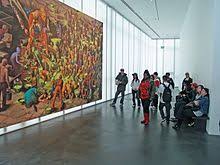method
ABOUT AQUARIAN PAINTING TECHNIQUE (part 5)
 This is confirmed by laboratory tests. Today, there are world-famous manufacturers who honor the traditions of the best manufactories, they have earned the high trust and respect of professionals. Information on the quality of the paint used can always be found by marking on its packaging. Knowing some of the laws of mixing, studying the behavior of paints of different companies and work experience will suggest the preferred choice of paints.
This is confirmed by laboratory tests. Today, there are world-famous manufacturers who honor the traditions of the best manufactories, they have earned the high trust and respect of professionals. Information on the quality of the paint used can always be found by marking on its packaging. Knowing some of the laws of mixing, studying the behavior of paints of different companies and work experience will suggest the preferred choice of paints.
Another stereotype is related to paper quality. You can read a lot of interesting things from the history of paper production and its application. Without delving into history and moving on to practical recommendations, let’s say that a modern watercolorist has a wide selection of professional paper. Continue reading




